The first thing we look at when we walk into a bathroom is the bathtub. It occupies a significant part of the space. It should be beautiful, easy to clean and comfortable. Convenience of use determines the size of the bathtub. Here it is necessary to choose it correctly.
Contents of the article
Dimensions of standard bathtubs
The choice of sanitary ware is one of the important moments in the design of the bathroom in the house and apartment. Special attention is paid to the choice of a bathtub. This sanitary device is the largest in a small room and when planning first of all decide where to put the bathtub and what size it can be. On sale there are standard and non-standard variants. Standard are good that if necessary, you can order an acrylic insert in the bathtub and thereby restore its appearance and extend its life. For the non-standard ones, this restoration option is not available. They can be renewed only with the help of poured acrylic.
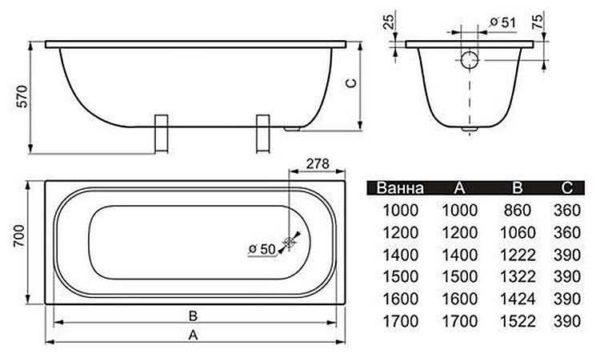
What else is good about standard-size bathtubs – they are always available in the assortment, you can see and feel them. Non-standard, however, most often brought to order. You can’t feel it beforehand. But standard bathtubs are not always the best solution, as it is not always possible to use the available space optimally.
On the market there are bathtubs of two standards – Russian (post-Soviet) and European “origin”. They are not very different, but these centimeters can be very useful.
| Name | Russian standard | European standard |
|---|---|---|
| Length | 150-170 cm | 150-180 cm |
| Width | 70-75 cm | 70-85 cm |
| Depth | 40-50 cm | 50-65 cm |
| Angle of inclination of walls | 50-80° |
How to choose the size of the bathtub
The size of the bathtub is chosen based on two parameters: the size of the room and convenience of operation. With the size of the room is simple: if the width of the bathroom is 160 cm, a longer bathtub without serious modifications can not be installed in it. Then choose the size that “fits” in the dimensions.
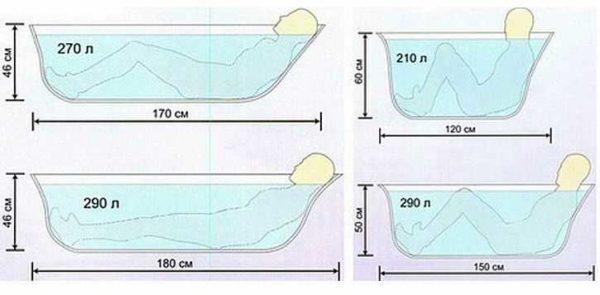
If the room is more spacious, choose according to convenience. Ideally, if you can dive into the water almost completely, “half-lying” with straightened legs. There are other options – up to sitting. Note that the shorter the tub, the deeper it is – so that the knees and shoulders of an average person are in the water.
The width of the bathtub is determined by the span of the shoulders – up to the sides should remain at least a couple of centimeters on both sides. Only in this way it will be possible to move freely. Depth depends on the first two parameters: the longer the vessel, the shallower it is.
Dimensions of cast-iron bathtubs
Cast-iron bathtubs are loved for reliability and durability. They serve for decades, and large people feel confident in them – the bottom does not bend under the feet. What can be damaged is the enamel, but it can be renewed in several ways. Another plus of cast iron – it is massive and the sound of falling water is practically not heard. It is these properties that often turn out to be decisive in the choice.
Disadvantages of cast iron
The disadvantages are also quite serious. The first is the heavy weight. Lifting a heavy ladder is a challenge, and it is not easy to move it horizontally. The second disadvantage is a smaller range in terms of non-standard shapes and sizes. This is due to the peculiarities of technology. You will not find anything super-original. The third disadvantage – massiveness and high heat capacity. While the cast iron heats up, you have to stand on the cold metal. This is especially unpleasant in winter.
Dimensions and depth
The dimensions of cast-iron bathtubs rarely differ from the standard. Even more rarely there are containers with special shapes – armrests, recesses, etc. The shape is most often rectangular, the length, depth and/or inclination of the walls may differ. Other variants are very expensive and rare. You can often meet three variants:
- Large. Length 170-180 cm, width 70-85 cm. In them you can freely lay down and rest. For ease of use, handrails are often added.
- Medium. Their length is 140-160 cm, width 70-75 cm. This option is also called half-sitting. You can lie in them with your legs bent at the knees. It is this option is more often installed in standard apartments, since larger ones simply do not become without moving the walls.
- Small. The length of these cast-iron bathtubs is 120-130 cm, the width is the same – 70-75 cm. Here an adult can only sit. This is a variant for small bathrooms in Khrushchevki, in which it is necessary to squeeze in a washing machine.
The depth of cast iron bathtubs is usually standard and is 65 cm, which is slightly larger than others, so the volume of these containers is also larger.
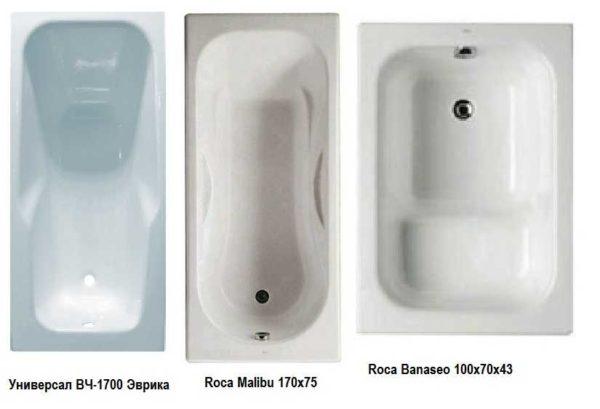
Imported cast iron bathtubs can be covered with enamel on the inside and outside. They are used for open installation without a screen, often they also have decorative legs. So they look presentable. But this option is more suitable for spacious rooms. In small ones better fit laconic, no-frills models.
Steel
Steel baths are not as durable as cast iron, but they also cost much less (three or four times the usual and two times – from stainless steel). More their advantages – less weight, lower heat capacity (faster heating), more options for shapes and sizes. They are made of black and stainless steel. Steel are always torn with enamel, which protects them from destruction, stainless steel – not always.
The disadvantages are substantial. If the enamel is damaged, ordinary steel quickly deteriorates, so the state of the coating must be carefully monitored. At the same time, its walls are thin – up to 3 mm thick, and under heavy load can bend, causing cracks in the enamel. If you want the steel bathtub served for a long time, install it on a reliable frame supporting the bottom and walls (usually made of brick or building blocks). The second disadvantage – they are very “loud”. If the bathtub at installation is not covered with soundproofing materials, the water jet “sounds” no worse than a drum.
The size of the bath from steel is often in two gradations: large (length 150-180 cm) and medium (length 130-140 cm). They are more often rectangular in shape, but there can be some unusual shapes – in the form of an oval, trapezoid, rectangle (almost without rounded corners), with a seat. Metal sitting bathtubs (small sizes) are rare, but if you want to find it is possible.
Acrylic – size range and shapes
Acrylic is a durable, chemically neutral polymer with a wide range of applications. It is made of it and bathtubs. And acrylic bathtubs are produced in a variety of shapes and sizes. They are round, oval, angular, complex shapes (in the form of a bean, for example). The walls may not be straight, but rounded, with smooth curves. The bottom can be with steps, there are often seats, notches, armrests and other “frills” that make operation more convenient. In the bathtub made of acrylic, various sprayers and nozzles for hydromassage are built in.
Advantages and disadvantages
Acrylic is a much less heat-consuming material than steel and cast iron. This means that it warms up faster. And this is another plus. The next positive quality is that it is lightweight. A bathtub of any size made of acrylic can easily be carried by one person. Another positive point: the size of the bath from acrylic can be ordered. The material is plastic, it can be given any shape, and the technology is such that you can make a container and large and small.
Now about the disadvantages. The walls of the acrylic bath are thin, under load they sag. Not the most pleasant feeling. Therefore, any acrylic bathtub installed on a frame of metal or bricks (building blocks), the frame itself then close the screen.
Attention to the quality of acrylic
Durability and ease of care depends on the quality of the polymer used. The best – sanitary acrylic, poured on a fiberglass base with a layer of at least 2-3 mm. But such specimens cost a lot. Often more expensive than steel, and prices for some bathtubs made of acrylic are not less than cast iron. But they serve for a long time and normally wash. By the way, care for acrylic bathtub is special. It can be washed only with certain sponges and special non-abrasive means.
The size of acrylic bathtubs should be described by shape, since they come in different forms.
- Standard shape. Length from 140 to 185 cm, width 75-90 cm, depth 40 – 65 cm.
- Round. Diameter from 140 to 200 cm, but can be larger.
- Corner. Here the size is determined by the length of the side – from 140 cm to 180 cm, depth – 45-65 cm.
It is difficult to determine the size of unusual shapes. They are usually delivered under the order or made specially. So if you need the size of the bathtub exactly under your room or unusual shape, your choice is unambiguous – acrylic.

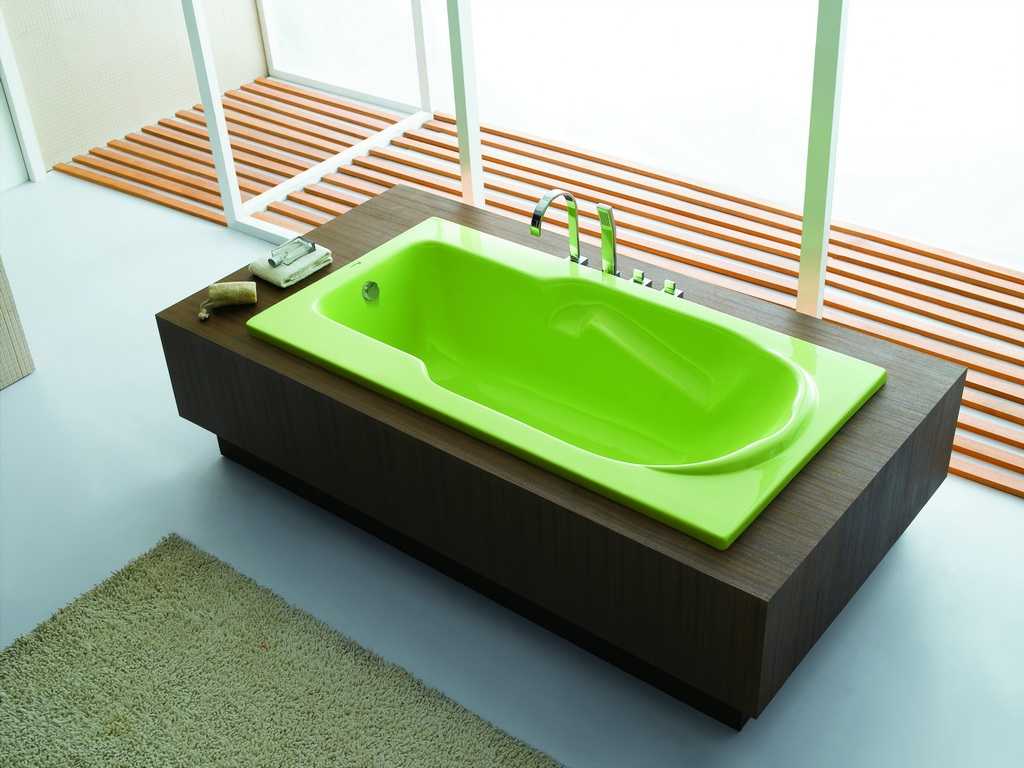

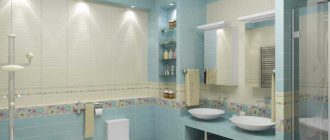


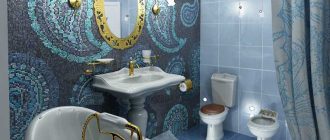

When I was picking a bathtub, I found steel ones lightweight and easy to install. But, cast iron? Super sturdy and holds heat well! Acrylic tubs are great for a modern look but can scratch easily. It’s all about balancing style and durability for your space!
Choosing the right bathtub was a maze! I went from steel to acrylic, and cast iron felt hefty. Each has its perks, like steel being super sturdy, and acrylic looking sleek. Finally picked acrylic for the style and easy cleaning. It’s a game changer for my bathroom vibe!
When I was shopping for a tub, I learned that steel ones are super lightweight and budget-friendly, but cast iron is more durable and has that classic vibe. Acrylic tubs are so easy to clean and come in cool shapes! Each material really has its perks!